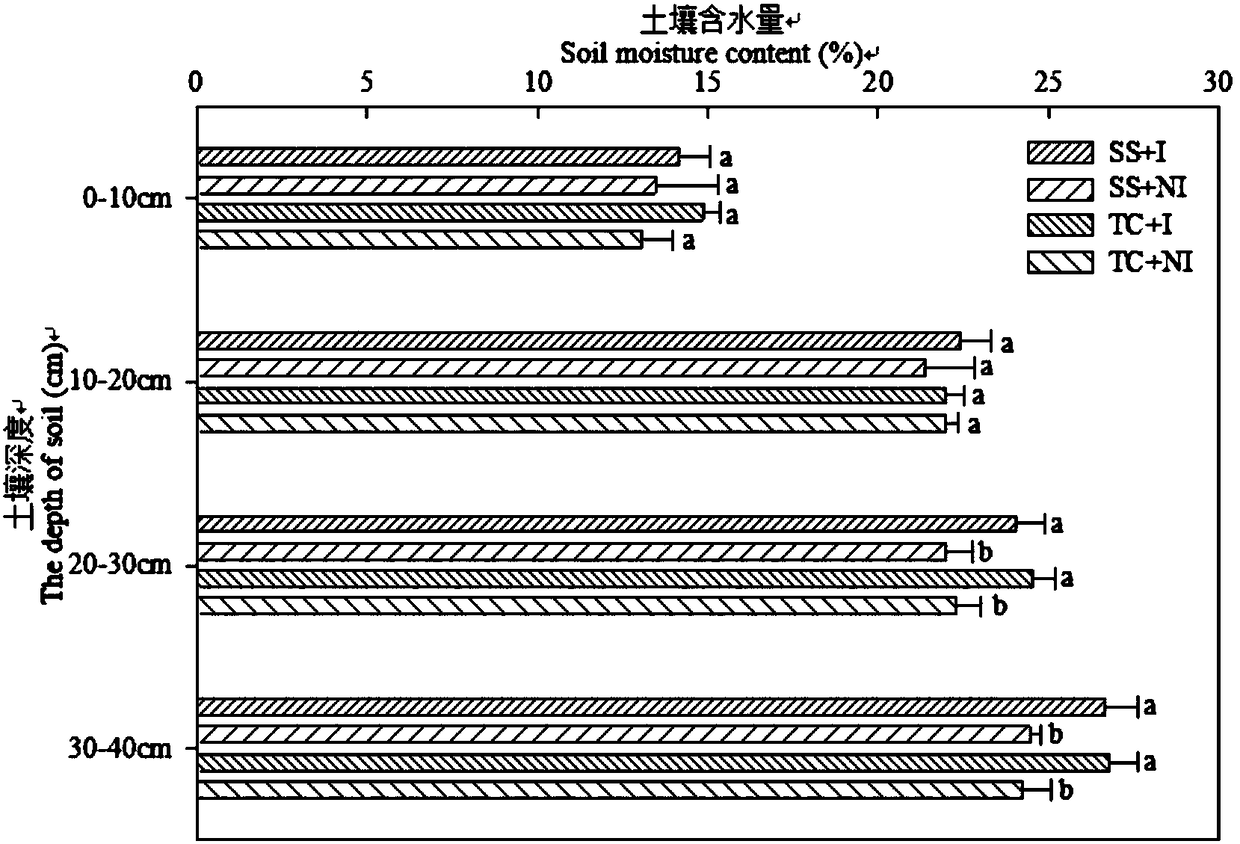Cultivation method capable of reinforcing stress resistance of corn and applicable to Jianghuai area
A cultivation method and a stress-resistant technology, applied in the field of agricultural cultivation, can solve problems such as crop yield reduction or failure, corn seedling waterlogging, large bell mouth stuck neck, etc., so as to improve the photosynthetic performance of the canopy, promote root pruning, soil The effect of increasing the moisture content
- Summary
- Abstract
- Description
- Claims
- Application Information
AI Technical Summary
Problems solved by technology
Method used
Image
Examples
Embodiment 1
[0015] Example 1: Effects of Different Soil Tillage Modes on Maize Yield
[0016] Test method: (1) During the wheat season, crush the straw into small pieces below 10cm, perform subsoiling, and then rotary tillage until the soil is finely crushed; the depth of subsoiling is 30cm, which is suitable for breaking the bottom of the plow; (2) Use no-tillage for direct seeding Sowing corn, corn planting density 6000 plants / 667 m 2 , row spacing 60cm, sowing depth 4cm; corn season every 667m 2 Apply 16-20kg of pure nitrogen, including 10-14kg of basal fertilizer, 4-8kg of topdressing at the top of the bell mouth; all basal application of phosphorus and potassium fertilizers, 5-8kg of phosphorus pentoxide, 6-12kg of potassium oxide, sprinkled on the surface and then rotary tillage into the soil ; (3) Irrigate the corn during the trumpet-mouth period; (4) Use mechanical harvesting at an optional time.
[0017] Four treatments were set up in the experiment, split-plot design, farming ...
Embodiment 2
[0022] Example 2: Effects of Different Soil Tillage Modes on Soil Water Content
[0023] Before the irrigation treatment (1 day before irrigation), there was no significant difference between the SS+I and SS+NI treatments, and there was no significant difference between the TC+I and TC+NI treatments; Deep soil moisture content was higher than no-tillage treatment. The variance analysis was carried out on the water content of different soil depths, and the results showed that there was no significant difference in the SS+I, SS+NI, TC+I and TC+NI treatments of 0-10cm and 10-20cm soils; but the 20-30cm and 30-40cm depth soils The water content was significantly higher than that of TC+I and TC+NI treatments, and the soil water content increased by 9.3% and 9.0% ( figure 1 ). The results showed that after the soil was deeply loosened, the moisture moved downward and the water content of the deep soil increased.
Embodiment 3
[0024] Example 3: Effects of different soil cultivation methods on the photosynthetic performance of the population canopy
[0025] It can be seen from Table 2 that before irrigation (1 day before irrigation) at the big trumpet-mouth stage, the net photosynthetic rate of leaves in the panicle layer was improved by deep loosening of soil compared with no-tillage treatment (P n ), stomatal conductance (G s ) and intercellular CO 2 Concentration (c i )(Table 2). Subsoiling treatment compared with no-tillage treatment P n 4.8% increase, G s Increased by 21.8%, c i Improvement by 26.7%. P n , G s and c i The performance is SS+I>TC+I>SS+NI>TC+NI treatment; among them, SS+I treatment P n Significantly higher than other treatments, TC+I treatment had no significant difference with SS+NI treatment, but significantly higher than TC+NI treatment; SS+I treatment P n Compared with other treatments, it increased by 15.4%, 16.3% and 24.5% respectively. In the middle stage of grou...
PUM
 Login to View More
Login to View More Abstract
Description
Claims
Application Information
 Login to View More
Login to View More - R&D
- Intellectual Property
- Life Sciences
- Materials
- Tech Scout
- Unparalleled Data Quality
- Higher Quality Content
- 60% Fewer Hallucinations
Browse by: Latest US Patents, China's latest patents, Technical Efficacy Thesaurus, Application Domain, Technology Topic, Popular Technical Reports.
© 2025 PatSnap. All rights reserved.Legal|Privacy policy|Modern Slavery Act Transparency Statement|Sitemap|About US| Contact US: help@patsnap.com



